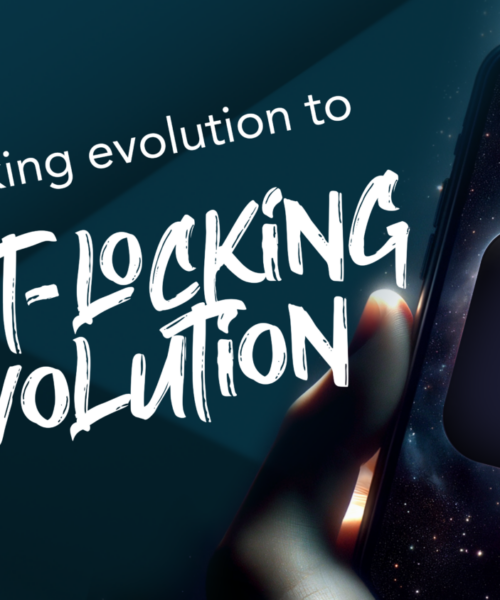Understanding the true costs of mechanical key systems for property management: A shift towards smart-locking solutions

Author: Mason Reiff, Sales Manager Mid West, iLOQ USA
Property management is an ever-evolving field, requiring constant innovation to meet the demands of security, efficiency, and cost-effectiveness. Traditional mechanical key systems, once the backbone of property access control, are increasingly becoming a source of financial and operational burden for property managers. This article explores the hidden costs associated with mechanical key systems and introduces a forward-looking perspective on the adoption of electronic access as superior alternatives, addressing both the financial and environmental concerns of traditional and battery-powered and battery-free smart lock systems.
The hidden costs of mechanical key systems
Operational expenses
Managing a property involves myriad responsibilities, with access control being paramount. Mechanical key systems incur significant operational costs, including key distribution, collection, and management. For properties spread across wide areas, the travel costs for key handovers can quickly add up, negatively impacting the bottom line.
Security risks
The security risks associated with mechanical keys – such as lost, stolen, or unreturned keys, and unauthorized key duplication – pose not only a threat to property security but also incur substantial financial costs for lock rekeying or replacement.
Maintenance and replacement
Regular maintenance tasks, such as rekeying lock cylinders and copying keys, represent direct costs and divert resources from other critical property management activities, further exacerbating the challenges faced by property managers.
Calculating the costs: A proposed framework
To quantify these challenges, a calculator focusing on three main cost components can be developed:
- Key replacement and lock rekeying costs
- Operational costs
- Impact of security breaches
This calculator would allow property managers to input specific operational variables and obtain a tailored estimate of the costs involved, providing a clearer picture of the total cost of ownership (TCO) for mechanical key systems.
Key replacement and lock rekeying costs
The formula to estimate these costs involves calculating the annual expense of replacing lost or stolen keys and rekeying locks, considering the number of keys lost or stolen and the number of locks rekeyed per year, alongside the cost per key replacement and rekeying operation.
Annual key replacement and rekeying costs = (Nk × Ck) + (Nr × Cr) where:
- Nk = Number of keys lost per year
- Ck = Cost per key replacement
- Nr = Number of locks rekeyed per year
- Cr = Cost per rekeying operation
Operational costs
Operational costs are calculated by considering the total hours spent on key management activities per month, the cost per labor hour, and the annual travel costs associated with key management.
Annual operational costs = (Tm × Hm × Cl) + (Ct) where:
- Tm = Total hours spent on key management activities per month
- Hm = Number of months in the operational year (typically 12)
- Cl = Cost per labor hour (including benefits and overheads)
- Ct = Annual travel costs associated with key management (fuel, vehicle maintenance, etc.)
Security breach impacts
The potential costs of security breaches are estimated by considering both the immediate and indirect costs per breach, including lock replacements, security assessments, downtime, reputation damage, and increased insurance premiums.
Annual security breach costs = (Nb × Ci) + (Nb × Cd) where:
- Nb = Number of security breaches per year
- Ci = Immediate costs per breach (lock replacements, security assessments, etc.)
- Cd = Indirect costs per breach (downtime, reputation damage, increased insurance premiums)
Comprehensive calculation
To get a comprehensive overview, we calculate these costs:
Total Annual Cost = Annual Key Replacement and Rekeying Costs + Annual Operational Costs + Annual Security Breach Costs
This formula provides property managers with a clearer understanding of the financial impact of the current mechanical key system. It aids in decision-making regarding the investment in more advanced key management solutions, such as smart-locking systems, by comparing these costs to the potential savings and security improvements offered by new technologies.
Implementation
To implement this calculator, property managers would input their specific operational data into a simple interface, which could be created as an online tool or spreadsheet. By adjusting the variables, managers can see how changes in their operations – such as improving key management practices or reducing the number of keys lost – affect overall costs. This personalized analysis empowers property managers to make informed decisions about upgrades and investments in their access control systems.
Looking towards the future: Smart-locking solutions
The transition from traditional mechanical locking systems to more advanced electronic solutions marks a significant shift in property access control. Despite their reliability, mechanical systems come with notable security limitations, inconvenience, and costs. These revelations have paved the way for the adoption of electronic alternatives.
In Europe, electro-mechanical systems – combining a fob with a metal key rod for electronic identity verification and physical access via a key cylinder – have set a precedent for efficient property management. Despite their advantages, such as scalability and ease of management, this innovation has not gained traction in the United States.
Here, the preference for leveling up from mechanical keys leans towards upgrades to high-security SFIC core options, which are easier to rekey and master, and electronic key-tracking systems which provide better accountability. These options, albeit offering some improvements, still involve costs related to copying and rekeying, without substantially enhancing functionality or user experience.
Hardwired electronic access systems, established in the 1980s, offer extensive features and flexibility but at a significant cost and infrastructure requirement, making them impractical for widespread adoption to every door. These systems often coexist with mechanical keys, even on the same doors, potentially leading to inefficiency.
The latest trend in wireless locking solutions, particularly smart locks, addresses many of these challenges but faces limitations due to battery dependency, affecting their reliability and maintenance. Typically limited to indoor use and low-traffic doors, their applicability remains restricted.
Addressing these constraints, innovations like those from iLOQ have emerged, merging the efficient, reliable, electro-mechanical cylinder format approach with smart-locking features, all while eliminating the need for batteries. Utilizing NFC technology, these smart locks authenticate and power access via a smartphone and unlock with a quick turn of the knob, offering a seamless blend of security, convenience, and low operational burden. While this specific battery-free innovation is patented, the industry must move towards high efficiency solutions for a sustainable electronic access future.
Advantages of smart-locking systems
- Real-time access rights management: Immediate updates and issuance of access rights enhance security and flexibility.
- Enhanced security and audit trails: Prevents key duplication and provides real-time monitoring of access.
- Operational efficiency: Facilitates the delegation of access control remotely, reducing the need for physical key handling.
- Elevated living experience: Happy residents lead to higher occupancy rates and longer tenancies. Smart locks offer convenient features that enhance the living experience, making your property an attractive choice for modern renters.
- Environmental benefits: Contributes to sustainability by reducing travel requirements for key management.
- Battery-free operation (iLOQ): Eliminates the need for battery replacements, reducing operating costs and environmental impact.
Conclusion
The shift towards smart-locking solutions represents a significant advancement in access control technology for property management. Offering a fast return on investment (ROI) and low total cost of ownership (TCO), smart-locking systems not only address the immediate challenges of key management but also present a more secure, efficient, and environmentally friendly solution. For forward-thinking property managers, adopting smart-locking technology is a strategic move towards enhancing property security and operational efficiency while contributing to environmental sustainability and elevating the user experience.




















